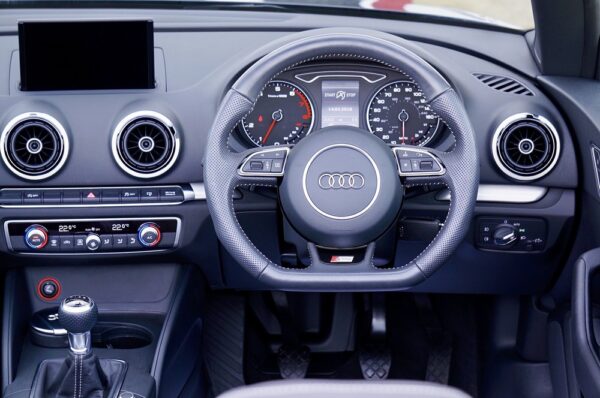Introduction: Car batteries play a crucial role in providing the necessary power to start your vehicle and run various electrical systems. To ensure the optimal performance and longevity of your car battery, regular care and maintenance are essential. In this comprehensive guide, we will explore the key aspects of car battery care and provide valuable tips to keep your battery in top condition. Additionally, we will discuss the different parts of a car exterior and the importance of maintaining them for a well-functioning vehicle.
[wcpcsu id=”1839″]
I. Importance of Car Battery Care and Maintenance
The car battery is a critical component that powers the vehicle’s electrical systems and ensures smooth operation. Understanding the importance of car battery care and maintenance is crucial for every car owner. Here are key points highlighting why battery care is essential:
- Role of the Car Battery: The car battery serves as the primary power source for starting the engine and operating electrical components such as lights, radio, air conditioning, and more. Without a properly functioning battery, these systems would fail to operate efficiently or at all.
- Signs of a Weak or Failing Battery: Recognizing the signs of a weak or failing battery is essential to prevent unexpected breakdowns. Common indicators include a slow cranking engine, dimming headlights, difficulty starting the vehicle, and frequent need for jump-starts. Regular battery maintenance allows you to identify and address these issues early on.
- Benefits of Regular Battery Care: Engaging in regular battery care practices offers several benefits. Firstly, it improves the reliability of your vehicle. A well-maintained battery ensures consistent power supply, reducing the risk of sudden breakdowns and inconvenience. Secondly, proper maintenance extends the battery’s lifespan, saving you from the expense of premature replacements. Additionally, a healthy battery contributes to the overall performance of the electrical systems, enhancing your driving experience.
- Avoiding Inconvenience and Breakdowns: One of the primary reasons to prioritize battery care is to avoid the inconvenience and potential breakdowns caused by a dead battery. A dead battery can leave you stranded and reliant on external assistance, such as jump-starts or towing services. Regular maintenance minimizes the chances of encountering this situation and ensures you can rely on your vehicle’s power when you need it the most.
To maintain the battery’s health and maximize its lifespan, consider the following tips:
- Keep the battery terminals clean and free from corrosion.
- Regularly inspect the battery for any signs of damage or leaks.
- Test the battery’s voltage periodically and charge it when needed.
- Avoid leaving electrical components on when the engine is not running.
- Drive the vehicle regularly to recharge the battery.
By following these practices, you can ensure that your car battery remains in optimal condition, providing reliable power and avoiding unnecessary breakdowns. Remember to consult your nearest auto parts store for any car care, automotive spare parts, or accessories needed to maintain your vehicle’s battery and other parts of the car exterior.
II. Essential Car Battery (parts of a car exterior) Maintenance Tips
Proper car battery maintenance is crucial for the smooth operation and longevity of your vehicle. Here are some essential tips to keep your car battery in optimal condition:
- Checking and Cleaning Battery Terminals: parts of a car exterior: Regularly inspect the battery terminals for any signs of corrosion or buildup. Corroded terminals can hinder the flow of electricity, leading to poor battery performance. Clean the terminals using a mixture of baking soda and water, a wire brush, and ensure a secure connection.
- Monitoring Battery Fluid Levels: For non-sealed batteries, it’s important to check the fluid levels regularly. Locate the battery caps and carefully remove them. Ensure the fluid levels are above the minimum line. If necessary, replenish the battery with distilled water. Be cautious not to overfill.
- Inspecting the Battery Case: Inspect the battery case for any cracks, leaks, or damage. A damaged case can lead to electrolyte leakage and compromise the battery’s performance. If you notice any issues, it is recommended to replace the battery.
- Testing the Battery’s Voltage: Periodically test the battery’s voltage to ensure it is within the acceptable range. You can use a voltmeter or a multimeter to measure the voltage. If the voltage falls below the recommended level, it may indicate a weak or failing battery. In such cases, it’s advisable to recharge or replace the battery.
- Using a Battery Maintainer or Charger: If your vehicle will be inactive for an extended period, such as during storage or long-term parking, it’s essential to use a battery maintainer or charger. These devices provide a trickle charge to keep the battery fully charged and prevent self-discharge. It helps in maintaining the battery’s capacity and ensures it’s ready to start the vehicle when needed.
Proper Battery Charging Techniques
To ensure the longevity and optimal performance of your vehicle battery as parts of a car exterior, it is essential to follow proper battery charging techniques. Here are key points to consider:
- Understanding the Charging Process: Battery charging involves replenishing the electrical energy stored within the battery cells. It is important to understand the charging process and different charging methods available. Common charging methods include trickle charging, fast charging, and smart charging. Each method has its own benefits and considerations.
- Using the Correct Charger: Using the correct charger for your specific battery type is crucial. Different battery types, such as lead-acid, AGM, gel, or lithium-ion, require different charging parameters. Consult your battery’s manufacturer specifications or seek advice from an expert to ensure you select the appropriate charger. This will prevent overcharging or undercharging, which can damage the battery.
- Step-by-Step Guide for Safely Charging a Car Battery: a. Start by reading the charger’s manual and familiarizing yourself with its features and safety precautions. b. Ensure the charger and battery are both in a well-ventilated area and away from flammable materials. c. Connect the charger’s positive clamp to the positive terminal of the battery and the negative clamp to the negative terminal. d. Double-check the connections and make sure they are secure. e. Set the charger to the recommended charging mode and voltage for your battery type. f. Start the charging process and monitor it closely. Avoid leaving the charger unattended. g. Once the battery reaches full charge, disconnect the charger, starting with the negative clamp followed by the positive clamp.
- Avoiding Overcharging or Undercharging: Overcharging or undercharging a battery can lead to reduced performance, decreased capacity, and potential damage. Modern chargers often include built-in safety features to prevent these issues. Smart chargers, for example, automatically adjust the charging rate and switch to a maintenance mode once the battery is fully charged.
Remember to consult your nearest auto parts store for any car care, automotive spare parts, or accessories needed for proper battery charging. Following these proper battery charging techniques will ensure your battery remains in good condition, providing reliable power and extending its lifespan.
IV. Factors Affecting Car Battery Life
The lifespan of a car battery depends on various factors. Understanding these factors can help you prolong the life of your battery and avoid unexpected failures. Here are some key factors that affect car battery life:
- Extreme Temperatures: Extreme temperatures, both hot and cold, can have a significant impact on battery performance and lifespan. In hot climates, the heat causes the battery fluid to evaporate, leading to reduced capacity. Cold temperatures, on the other hand, increase the internal resistance of the battery, making it harder to deliver power. Parking your vehicle in shaded areas or using battery insulation wraps can help mitigate these effects.
- Regular Driving: Regular driving is essential for maintaining a healthy battery. When the engine runs, it recharges the battery, ensuring it remains at an optimal charge level. Short trips or infrequent driving can lead to a discharged battery over time. If your vehicle is not used regularly, consider using a battery maintainer or charger to keep the battery charged.
- Identifying and Resolving Battery Drain Issues: Issues such as faulty electrical components, parasitic draws, or leaving lights on can drain the battery even when the vehicle is not in use. It’s important to identify and resolve these issues promptly to prevent excessive battery discharge. If you notice recurring battery drain problems, it is advisable to have your vehicle inspected by a professional technician.
- Limited Use of Electronics: Using electronics such as the radio, headlights, or air conditioning when the engine is not running can drain the battery. It’s important to minimize the use of these electronics when the vehicle is stationary to avoid unnecessary strain on the battery. If you need to use electronics for an extended period without the engine running, consider using a separate power source, such as a portable power bank.
Conclusion: Proper car battery care and maintenance are crucial for the reliable operation of your vehicle. By following the tips outlined in this guide, you can extend the life of your battery and avoid unexpected breakdowns. Additionally, maintaining the various parts of a car’s exterior is vital for both aesthetics and functionality. Regular maintenance, along with finding the nearest auto parts store, ensures you have access to quality automotive products when needed. Take care of your car’s battery and exterior, and enjoy a safe and enjoyable driving experience.

